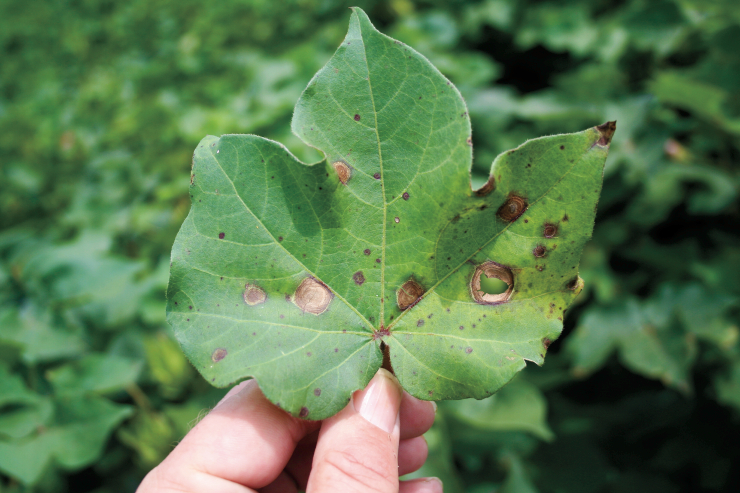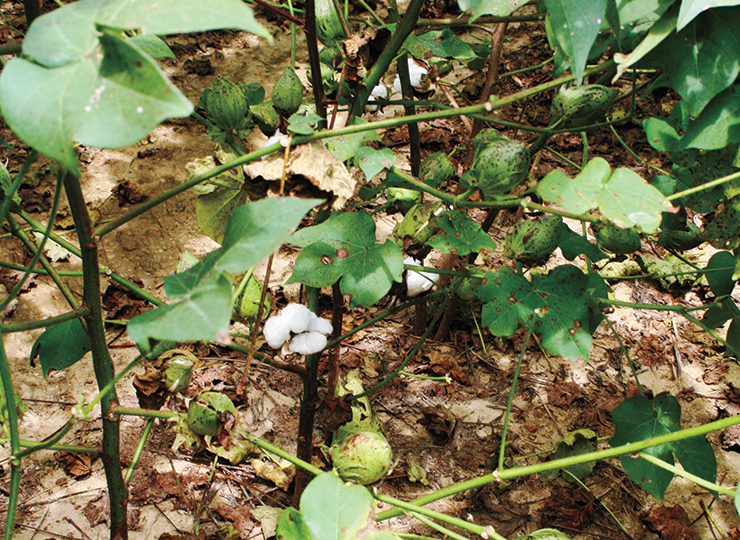Home > Alabama > Alabama Farm to Table > Alabama Extension Helping Gulf Coast Farmers Stay Ahead
Alabama Extension Helping Gulf Coast Farmers Stay Ahead

Among the unique challenges faced by farmers in Alabama’s Gulf Coast region is an abundance of moisture. The afternoon thunderstorms that soak southern Alabama soil with rainfall can cause certain plant diseases to flourish. If left unchecked, these diseases can be problems that can endanger an entire season’s worth of crops.
“The closer you get to water, the more difficult your disease control becomes,” says Dr. Austin Hagan, a plant pathologist at Auburn University who works with fellow researchers at Alabama Cooperative Extension to help farmers predict, spot and respond to plant diseases and other agricultural challenges.
Small grains, corn, peanuts, cotton, citrus, pecans and ornamentals are some of the crops that Hagan and Auburn University researchers are currently studying in ongoing research trials that compare crop varieties to determine which are most productive and resistant to disease. The field trials also evaluate fungicides to offer farmers an independent analysis of which products provide the most effective treatment.
“The variety testing compares varieties from different companies side by side in an unbiased research trial to see which ones perform best in this area,” says Jarrod Jones, associate director of the Gulf Coast Research and Extension Center in Fairhope where Hagan also conducts most of his research. “That’s an important thing because we have new varieties coming on the market and the testing allows farmers to see that data before they make their planting or seed decisions.”

A Cotton Leaf Spot Disease
Of all the research done at the center in the past year on Gulf crops, both Hagan and Jones sound the alarm about one disease above others: Corynespora leaf spot in cotton.
For decades, early and late leaf spot have been highly destructive diseases in Alabama peanuts. The leaf spot fungus produces lesions that can lead to the total defoliation of plant leaves and – in peanuts at least – can cause yields to plummet.
Leaf spot hadn’t been identified in Alabama cotton until 2011, even though the fungus first showed up in irrigated cotton in Georgia five years ago.
“We saw it in 2011 in Alabama statewide,” Hagan says. “In 2012, it was worse. It’s particularly troublesome in cotton with a high-yield potential, but it’s not limited to irrigated cotton.”
The overall impact of the disease on cotton yields is still unclear. Hagan and other Auburn researchers are currently studying the effect of different levels of defoliation in the cotton canopy on yields. They are also evaluating which cotton varieties may be most sensitive to the disease and which fungicides could work best at combating it.
“We’re still early on, so we’ll have to wait and see how those trials turn out,” Hagan says. “More work will be required before we determine how much of a problem this issue will be for cotton.”
Aside from fungicide application, Hagan’s research indicates that one of the most effective early controls of the disease may be crop rotation. “Instead of growing cotton every year, you’d grow peanuts or soybeans or corn and alternate those with cotton to reduce the amount of disease pressure you get early in the season,” he says.
Leaf spot is a primary example of a challenge that could hit Gulf growers especially hard because of rainfall patterns that fuel the fungus growth causing the disease.
“If you’re up in northern Alabama where you have a drier climate, this disease is not going to be as much of an issue,” Hagan says. “When you get down to southern Alabama, there’s enough moisture out there to really drive its development. The folks down in the Gulf area are particularly vulnerable to this kind of disease.
“There’s so much concern about Corynespora leaf spot in cotton because we don’t have any really good answers,” he adds. “We’re trying to get the word to growers that it’s out there.”
Growers looking for more information on leaf spot disease or other problems affecting their crops should contact Alabama Cooperative Extension System. To view data from the field trials on Alabama crops, visit www.alabamacrops.com.



